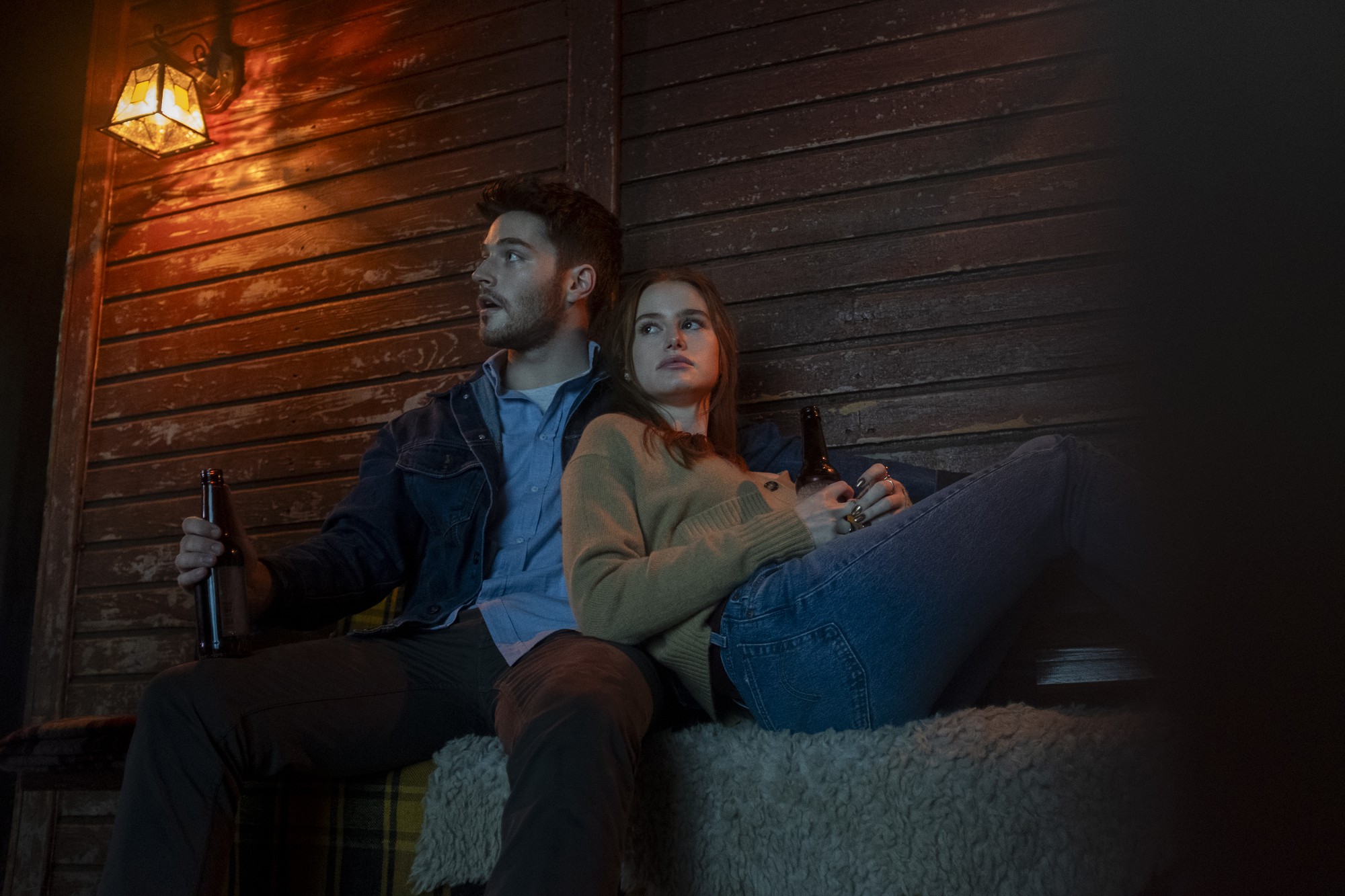Based on the original 2008 horror film, “The Strangers: Chapter 1” (2024) directed by Renny Harlin, who also directed “A Nightmare on Elm Street 4” and “Die Hard 2,” is the first film in an upcoming reboot trilogy. The film focuses on a couple who encounter three masked strangers while spending the night in an eerie small town. The couple, Maya and Ryan, are played by Madeline Petsch, who is known for her role in “Riverdale,” and Froy Gutierrez, who is known from “Teen Wolf.” On a road trip to Portland for their 5th anniversary, they experience car issues and are forced to momentarily stay in the “middle of nowhere” town of Venus, Oregon. As they lodge in a secluded cabin, the couple meets a group of unusual assailants who intrude on the couple’s residence. While “The Strangers: Chapter 1” is hardly a new approach or reinvention of the horror genre, the film still provides reliable thrills and a good scare by consistently playing into safe, tried-and-true tropes. However, a lack of explanation and backstory, prompted by the film’s trilogy intentions, may leave a unsatisfied taste in some viewers’ mouths.
“The Strangers: Chapter 1” is an engaging—but safe—addition to the horror film genre. The film employs typical horror tropes such as a cabin in the woods at night, eerie lullabies, shower jump scares à la “Psycho” (1960), screeching violin tremolos and vague allusions to religion that many audiences will find familiar. Although these common platitudes are used, the film doesn’t feel overtly gimmicky and everything fits in place within the context of the story. While, admittedly, most coming to watch “The Strangers: Chapter 1” aren’t tuning in for explorations of nuanced themes and artful direction, the film’s cinematography sufficiently serves its purpose for a commercial horror flick. The fast pacing and sharp editing also manage to successfully establish thick tension that keeps viewers on their toes.
The film has excellent lead performances by Gutierrez and especially by Petsch. While their dynamic as a couple isn’t explored enough for viewers to create a tight, emotional bond with these characters, Gutierrez and Petsch’s performances impressively portray their fear and agony. Petsch has a few squeal-worthy moments that can get audiences wincing along with her as well. However, the likability or rationality of the characters is up for debate as some decisions made – particularly by the character of Ryan—regarding their survival against The Strangers are more questionable and can irritate many viewers.
The largest potential point of contention for audiences comes from the plot’s overall narrative and status as one-third of a future trilogy. For frequent horror film viewers—including myself—discovering the “why” and complex backstories behind a film’s supernatural, terrifying happenings is the most interesting part of a horror movie. Many viewers eagerly assess clues on the screen and form theories just to have their satisfying “aha” moment at the end. However, as the first and only installment in the trilogy so far, the film doesn’t even bother approaching or suggesting any reasonings behind the senseless violence happening on screen. There are vague allusions to themes such as class (“urbanites” vs “rural” locals) and religion, but a lack of exploration into these installments leaves them as lone red herrings. For those patient enough to wait another year for all the films to come out, this lack of closure should be no problem. On its own though, the film may feel incomplete.
In conclusion, my recommendation regarding The Strangers: Chapter 1″ depends on what you are seeking. If you’re looking for a refreshing take on horror cinema with “something to say”—similar to Jordan Peele’s recent films—you’re not going to find that with “The Strangers: Chapter 1.” And if you do not want to wait another year for two more films to learn the whole story, then I also would not recommend buying a ticket. In contrast, if you’re ultimately just looking for a good scare and to get your heart racing for an hour and a half, then I would suggest giving the film a shot.
—
Featured Image Photographed by John Armour for Lionsgate

